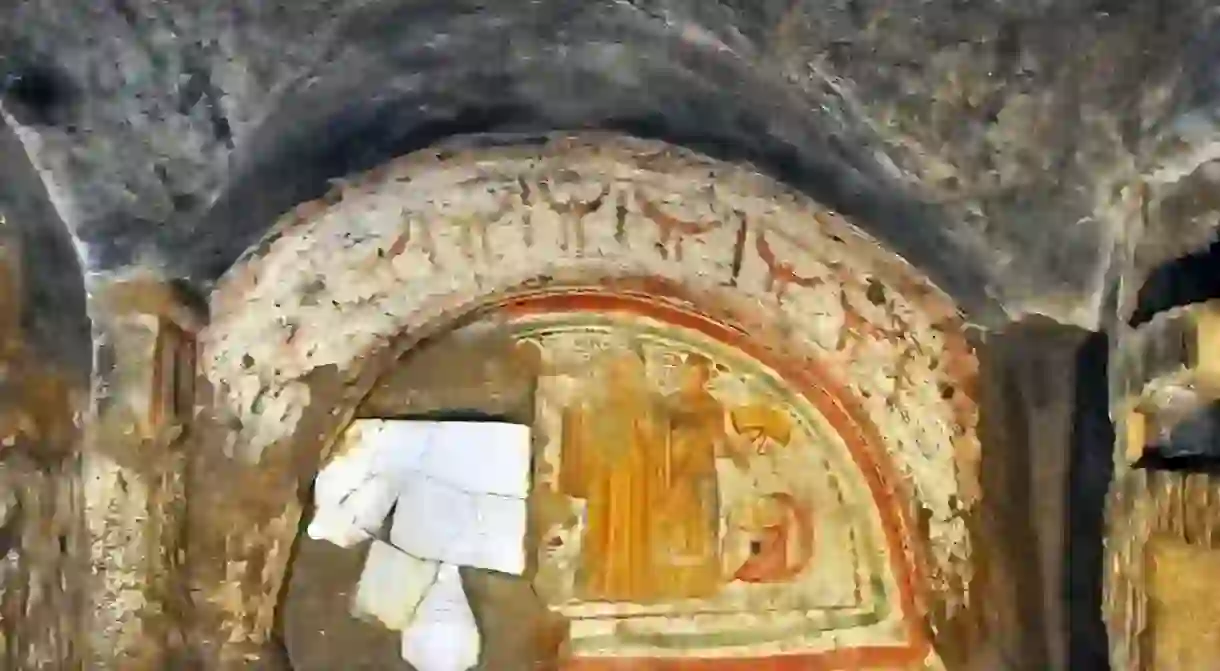Incredible 1,600-Year-Old Frescoes Discovered in Roman Catacomb

With a history that spans millennia and traces of the past around very corner, Romans often admit that it takes more than a lifetime to discover all the treasures hidden – and buried – in the Eternal City. Rome’s cultural heritage continues to be brought to life with new discoveries each year, thanks to dedicated archeologists and art restorers who are busy excavating ruins or diligently working on restoration projects. Most recently, frescoes dating back to the 4th century have been unveiled in one of Rome’s catacombs with the help of laser technology. This latest discovery helps shed further light on the rich historical fabric of the city.
The Catacombs of St. Domitilla, which lie on Rome’s ancient Appian Way, are one of the main landmarks of this historic route that connected Rome with the port-city of Brindisi. They are the best preserved, and most extensive, Catacombs in Rome: the underground caves are laid out on four levels that span 17 kilometers and are believed to be the world’s oldest Christian cemetery. The Catacombs of St. Domitilla are believed to hold the remains of 150,000 people and through frescoes and artifacts, offer a unique glimpse into the Christian community of Rome during the 2nd – 9th centuries.

With the use of digital technology, archeologists have been able to make even more discoveries within the complex and recently cleaned up 1,600 year old frescoes within the tombs of the city’s ancient bakers. Thanks to slow and diligent work – which was carried out ‘millimetre by millimetre’ according to Barbara Mazzei, who led the team – the archeologists were able to eliminate residue and grime on the frescoes without corroding the original paintings. The restoration project took three years and the €60,000 bill was footed by the Pontifical Commission for Sacred Archaeology, which is involved in conservationist activities.

The frescoes date back to the 4th century and depict both Christian and pagan scenes, illustrating the transition from pagan mythology to a belief in the religion of Christ. The paintings are vibrant and feature many depictions of wheat and bread: there is an image of Jesus feeding 5,000 with bread and fish, as well as a scene of grain arriving in Rome from Egypt. There are also illustrations of peacocks, a pagan symbol of the afterlife.

Bread was not only important in the Bible; it was an important source of sustenance for Romans throughout the centuries. Grain transportation was highly regulated in ancient Rome and every citizen received a daily bread ration, so the city’s bakers carried out a crucial function in the Empire and were highly-regarded in society. The elaborate burial chambers are proof of their wealth and help historians further piece together the elaborate history of the Eternal City.













